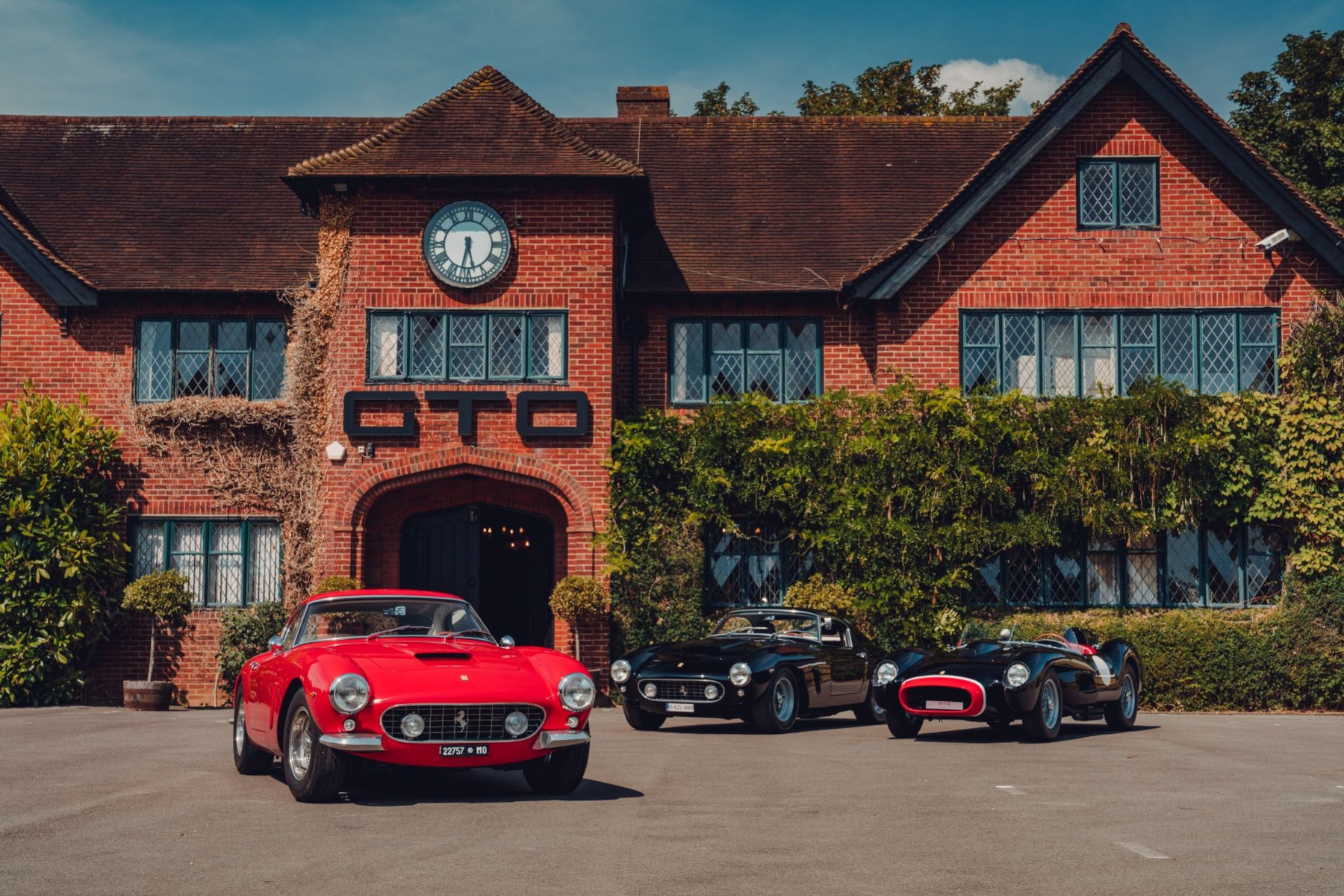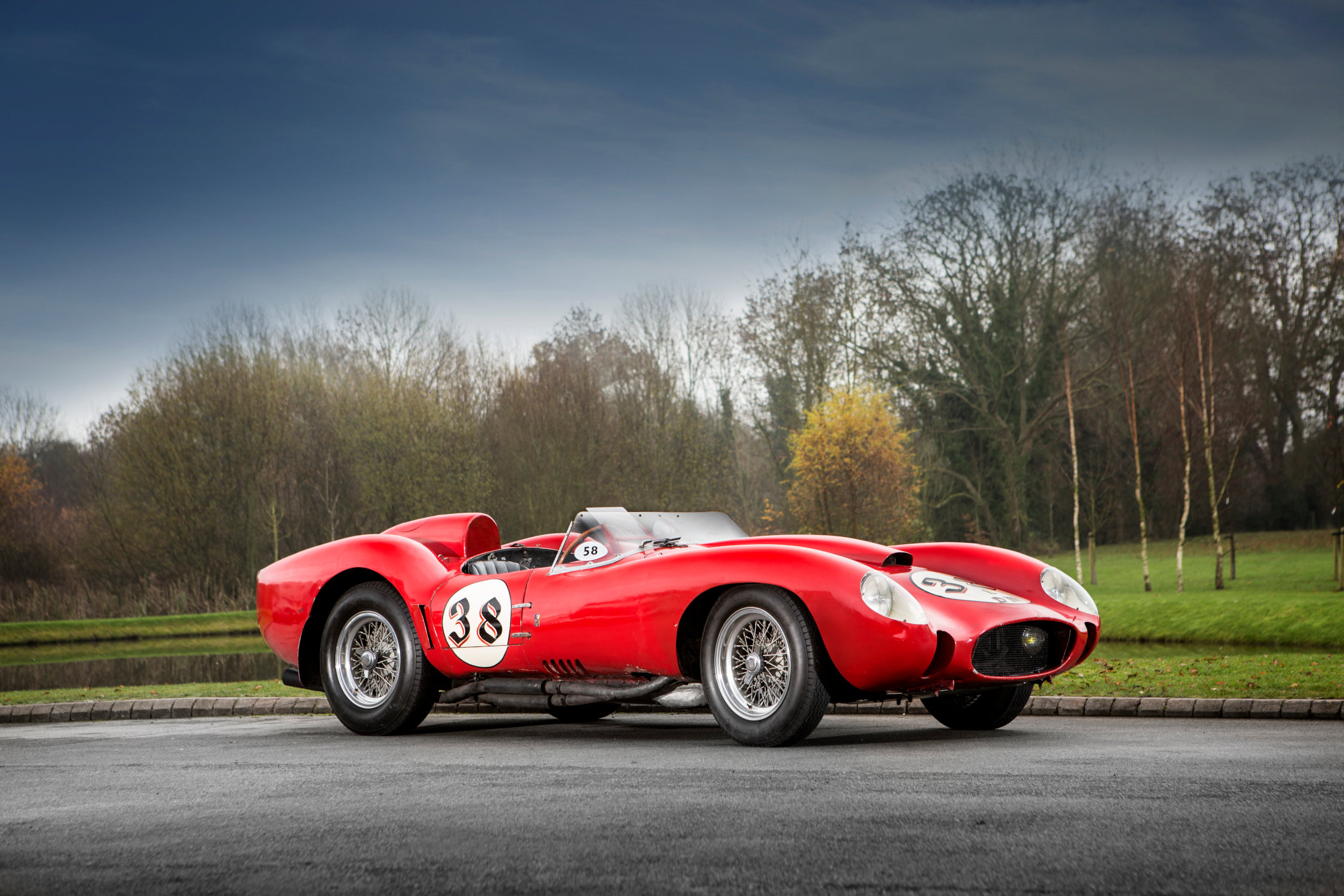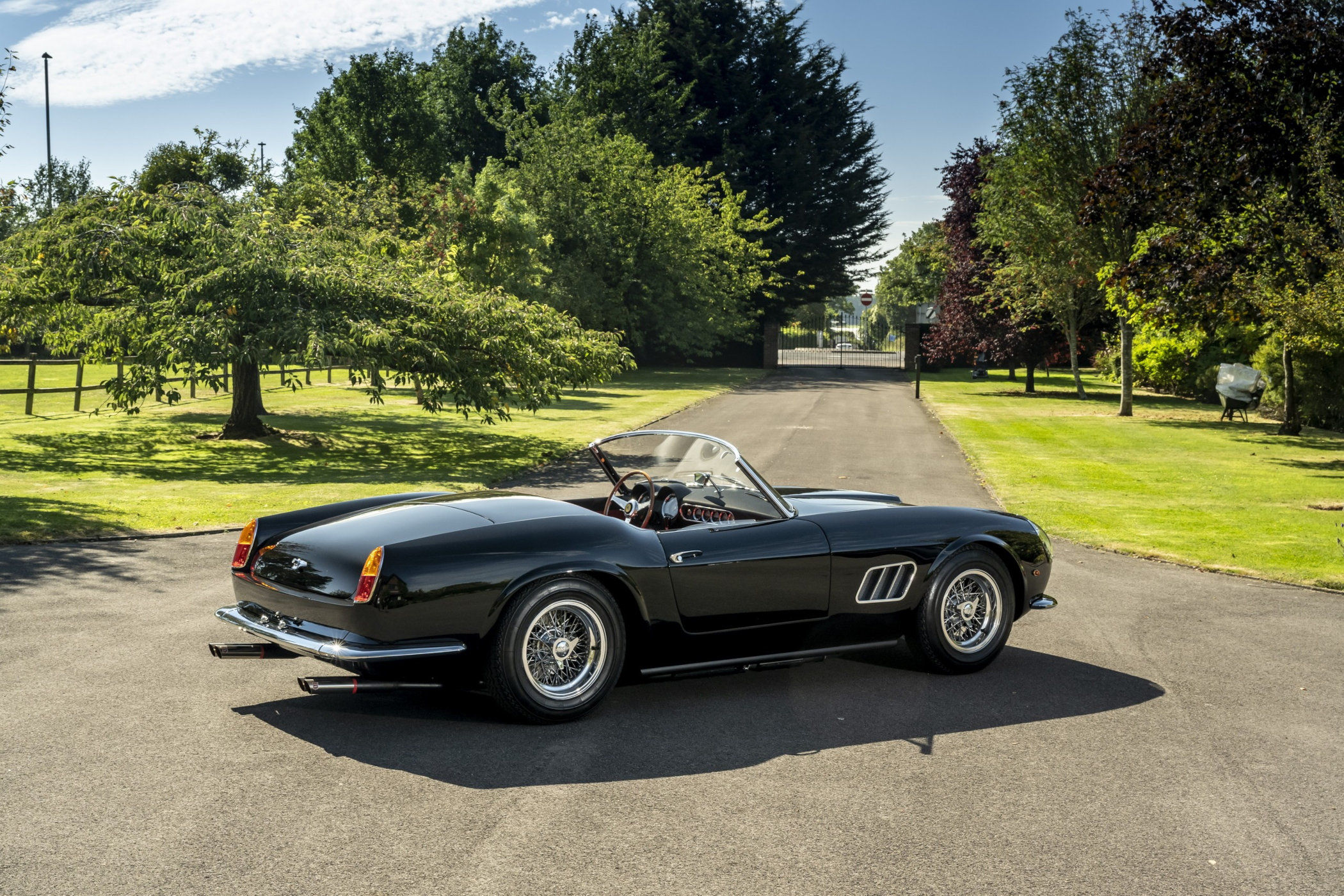The GTO Engineering California Spyder Revival
Fancy owning one of the best cars made by Ferrari, at only a fraction of the price?

What if I told you, you can own one of the most desired and rare Ferrari convertibles ever made, for a fraction of what it’s actually worth? You’d be having a laugh, right? Or at least think I was a bit “out there”. But truth be told there is a way to own a Ferrari 250 GT California Spyder SWB for the measly sum of 1 million USD. And that, my fellow Petrolheads, is a bargain considering the value of an actual Ferrari 250 GT California Spyder SWB is about 16 times that. How is this possible? Through an as close to perfect as you can get Revival program by UK-based Ferrari specialists GTO Engineering.
Now, in all fairness, this intro is to be taken lightly of course. About 99.9% of us will never be able to shell out a million dollars for a car, let alone 18 million for one. That is only something to be considered by the 1 per cent, of the 1 per cent of the very rich. But as the past revival or resto-mod projects we’ve featured have taught us the price usually goes up by quite a margin, this time around the newly made version is a whole lot cheaper, and better, than the original!

The Ferrari 250 series, and the 250 GT California SWB
This is of course down to the fact of the original car in question. The drop-dead gorgeous Ferrari 250 GT California Spyder SWB is an automotive gem, and an extremely rare one too (only 106 built). Made in 1959 and shown to the public at the Geneva Motor Show (remember those?), the 250 GT California Spyder SWB was a shortened, lowered and more tightly designed version of the Ferrari 250 series of sports- and racing cars. The name is derived from the capacity of a single cylinder in the famous 3.0 litre Colombo Tipo 125 V12 engine. Every single Ferrari 250 GT California Spyder SWB is a little bit different to the next, as metal worker Sergio Scaglietti didn’t rely on drawing and plans, but simply beat out the panels by hand.

The 250 designation by Ferrari is one of the most famous number combinations in automotive history. Cars like the Ferrari 250 Testa Rossa, 250 GT Berlinetta, or the 250 GTO have all worn it with great pride. Cars that achieved monumental race wins, including Le Mans, Targa Florio, Mille Miglia, Tour de France and other iconic racing venues. The lineage of Ferrari 250 cars started with the 250 S built in 1952 and lasted up to 1964 when it would be replaced by the 275 and 330 series of cars. In those 12 years, 7 different racing versions of the 250 platform would be campaigned by Ferrari, aloongside 14 different road-going 250s.

It takes too long to go into every little detail of every single Ferrari 250 they made during those years so we’re focusing on the Ferrari 250 GT California Spyder for now. And to be even more specific, you can divide the Ferrari 250 GT California Spyder into a long-wheelbase (Passo Lungo, LWB) or short wheelbase (Passo Corto, SWB) model. The difference between the two is in the chassis, which is either 2400mm or 2600mm long. As a result of the shorter underpinnings, the 250 GT California SWB has a tighter designed body that sits slightly lower than its long-wheelbase sibling.
GTO Engineering
Before we dive into the GTO Engineering California SWB Spyder Revival, I’ll start by providing a bit more information on the company that created it. GTO Engineering is a Ferrari specialist with a dedicated team of expert craftsmen, headquartered in the UK but with an extension in Los Angeles, California. The company specializes in all things concerning Ferrari, both old and new. From pre-purchase appraisals to preparing cars to go racing, or even full restoration work and engine rebuilds, everything is possible.

Using their extensive knowledge and skill, and a network of connections to match, GTO Engineering can do pretty much everything with regards to Ferrari cars. That’s part of the reason why they have been able to recreate three of the most revered and desirable Ferrari 250 cars ever made; the 250 GT Berlinetta SWB, the 250 Testa Rossa (also known as the TR), and the 250 GT California Spyder SWB. Each one of these recreations, designated as Revival cars, is a minute one on one rebuild of an original car. Every single detail has been painstakingly replicated, to create something that looks like the original, but costs a whole lot less. And in the process, GTO Engineering subtly improves key factors in favour of reliability and drivability.

To put things in perspective, the Ferrari 250 GTO is considered one of the most valuable cars ever created. Not just by Ferrari, but in general. One of these cars, from 1962, came up for auction in 2018 and was sold by RM Sotheby’s for a record-breaking USD 48,4 million. Of course, the value of such cars depends on factors as condition, matching numbers for the chassis, engine and gearbox, racing provenance, ownership, rarity etc. But nevertheless, if you look at this list of most expensive auctioned cars, you’ll find no less than 5 Ferrari 250’s in the top 20 entries.
California Spyder Revival
Technically, this GTO Engineering California Spyder Revival is a replica, but that seems to be a misfitted term for this car considering the craftsmanship on display. This is a better-than-new creation of a rare piece of automotive history. It’s built to modern engineering standards but retains that suave look of a 1960s Italian built sportscar. Of the original car, only 50 LWB and 56 SWB versions were built so this is a way to let more people enjoy the splendour that is the Ferrari 250 GT California Spyder.
What GTO Engineering does, apart from making you a bit less rich, is build the car from the ground up on an existing Ferrari donor chassis. Provided by you, preferably. And this is the first real hurdle because a fitting chassis isn’t something you can pick up at Home Depot or your local chop shop. Most people that enlist the help of GTO Engineering provide a Ferrari 330 chassis as a start, already not an easy thing to come by. And at a going rate of a couple of hundreds of thousands of dollars in pristine condition, the math quickly ends up on the “bloody expensive” side of the scale.
GTO Engineering will only use a Colombo Tipo 125 V12 engine, but depending on your wishes can increase the capacity, change the cam, etc. As a result, the power can be anywhere from the original 280bhp to roughly 400bhp. And in a car that weighs roughly 1,100 kilos, that kind of power is more than enough to blast down twisty B-roads down to the French Riviera in style. For the rest, you’re pretty much left with a carte-blanche. You can choose the paint colour, interior style and colour, trim details, everything.
The result is brilliant, really. It looks stunning, probably sounds brilliant too, and it’s apparently better to drive than it could ever do when it left the factory in Maranello, Italy. As explained by Top Gear, don’t expect a raiser sharp handling performance machine though, as it is still based on engineering from that era. It has just been improved in key areas, like the stiffened chassis for instance. Just like an old car should, you’ll not fit in it if you’re on the taller side (so I’m out with 2.01m), and its drive is completely unassisted. So you can expect a bit of a work-out at slower speeds, but reading through Top Gear’s driving notes, it should become more alive at higher speeds.
In the end, you will be able to enjoy an inch-perfect recreation of one of the most gorgeous cars ever created. The black one you see in the images here is based on an original Ferrari 250 California Spyder SWB once owned by actor James Coburn (The Magnificent Seven, The Great Escape). This car is currently part of BBC Radio DJ Chris Evan’s collection (see the Top Gear clip below). It was sold to Chris Evans in 2008 for the sum of GBP 5 million. Still, it’s a far cry of the USD 48,4 million you’d need for the 1962 Ferrari 250 GTO sold in 2018. In comparison, the GTO Engineering 250 California Spyder Revival seems like a real bargain.
Of course, this is all to be taken lightly, and only possible for those with deep enough pockets to be able to spend a million on a car in the first place. And to top it off, you’d need that donor car. There’s not going to be hundreds of people looking for something like this but GTO Engineering has enough orders on the books for the next three years. This means that however small it may be, there is quite the market for the conversion.
But leaving the cost factor out of the equation, would you sacrifice one Ferrari, to build another? Would you offer up an already admirable and desirable car, in order to buy something that’s not considered genuine, even though side by side you probably wouldn’t be able to tell the difference? I get the appeal of the Ferrari 250 GT California Spyder, I really do, but personally, I’m still torn between a “yes!” out of sheer excitement, and a resounding “no!”.
For more information, please visit TopGear.com and GTOEngineering.com.
















3 responses
“Life moves pretty fast. If you don’t stop and look around once in a while, you could miss it.”
“It is so choice. If you have the means, I highly recommend picking one up.”
Ahh to be the guy who has this and the Tiffany Patek 5711 ! What a Christmas !
Hi Robin,
thanks for your detailed article.
To me this appears a “wannabe” operation, sort of things we often see in horology world as well (genuine movement in cases resembling more expensive brands – I won’t make names).
If I ever had the money I would buy an original, not a “replica” (with all the respect due to GTO engineering and their remarkable work, and to the owner of a sacrificable genuine Ferrari); If I ain’t got the money, I would look for something genuine I can afford.
Of course, just my humbe opinion.
Best regards,
Andrea.